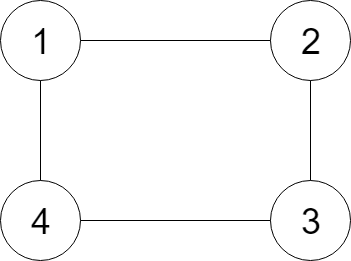133. Clone Graph
Given a reference of a node in a connected undirected graph, return a deep copy(clone) of the graph. Each node in the graph contains a val (int) and a list (List[Node]) of its neighbors.
Example:

Input:
{"$id":"1","neighbors":[{"$id":"2","neighbors":[{"$ref":"1"},{"$id":"3","neighbors":[{"$ref":"2"},{"$id":"4","neighbors":[{"$ref":"3"},{"$ref":"1"}],"val":4}],"val":3}],"val":2},{"$ref":"4"}],"val":1}
Explanation:
Node 1's value is 1, and it has two neighbors: Node 2 and 4.
Node 2's value is 2, and it has two neighbors: Node 1 and 3.
Node 3's value is 3, and it has two neighbors: Node 2 and 4.
Node 4's value is 4, and it has two neighbors: Node 1 and 3.
题意:深克隆图
代码如下:
/** * // Definition for a Node. * function Node(val,neighbors) { * this.val = val; * this.neighbors = neighbors; * }; */ /** * @param {Node} node * @return {Node} */ var cloneGraph = function(node) { if (!node) return node; const ref = {}; const copy = new Node(node.val, []); ref[node.val] = copy; dfs(node, ref); return copy; }; var dfs = function(node, ref) { for (let neighbor of node.neighbors) { if (!ref[neighbor.val]) { const copy = new Node(neighbor.val, []); ref[neighbor.val] = copy; ref[node.val].neighbors.push(copy); dfs(neighbor, ref) } else { ref[node.val].neighbors.push(ref[neighbor.val]) } } }